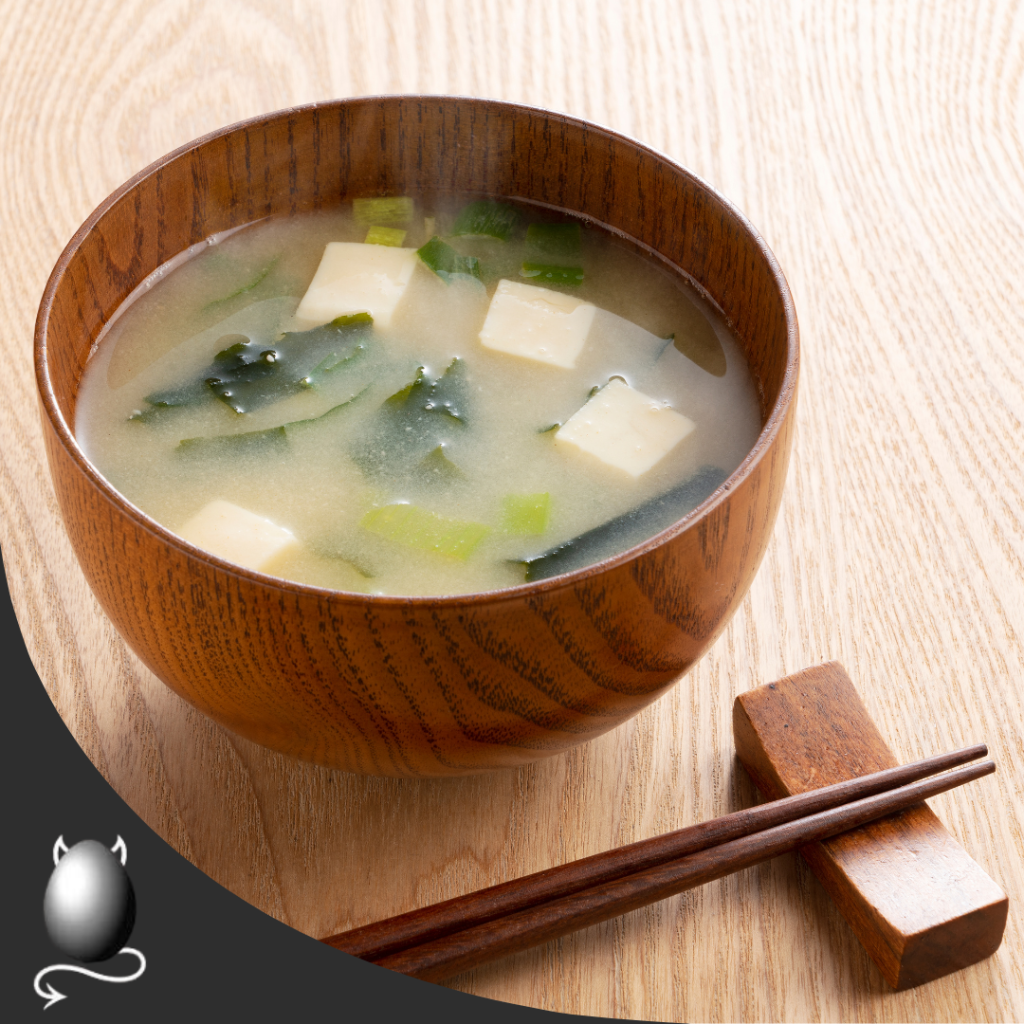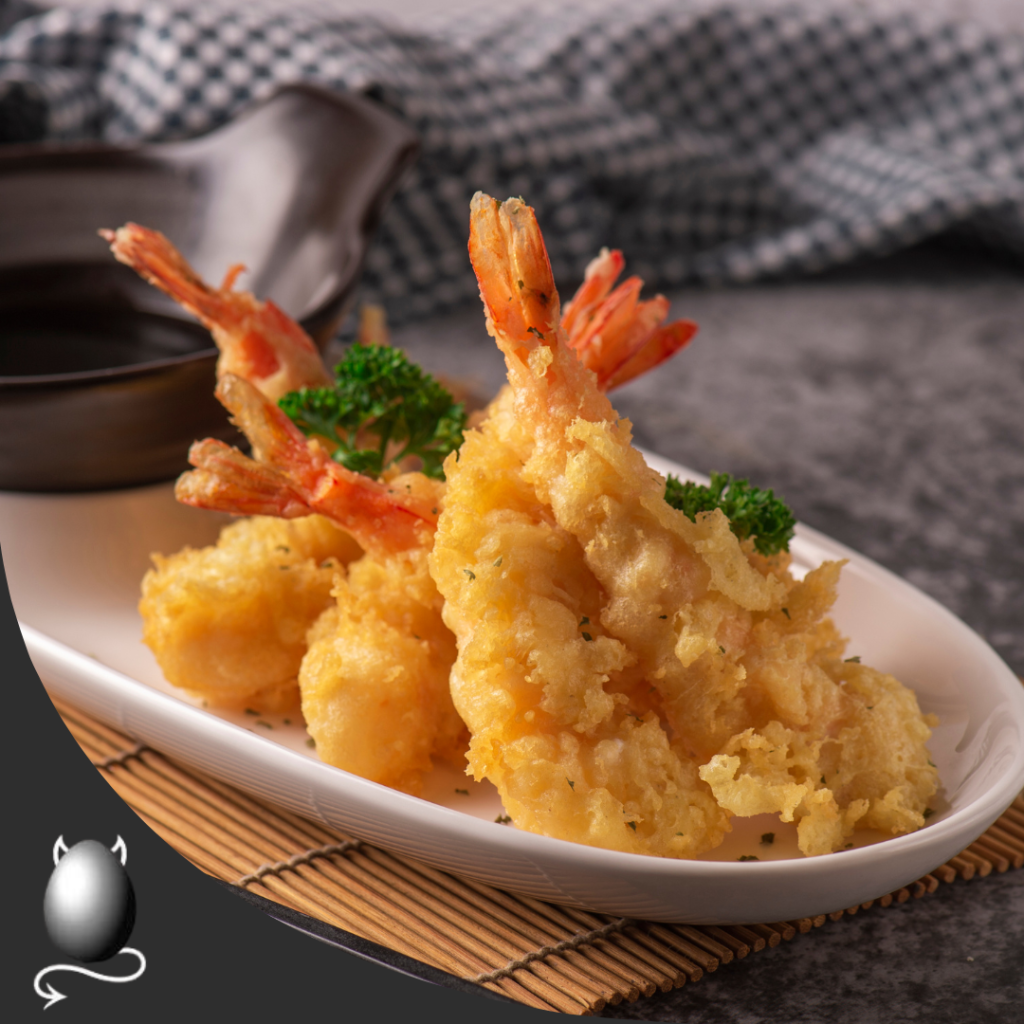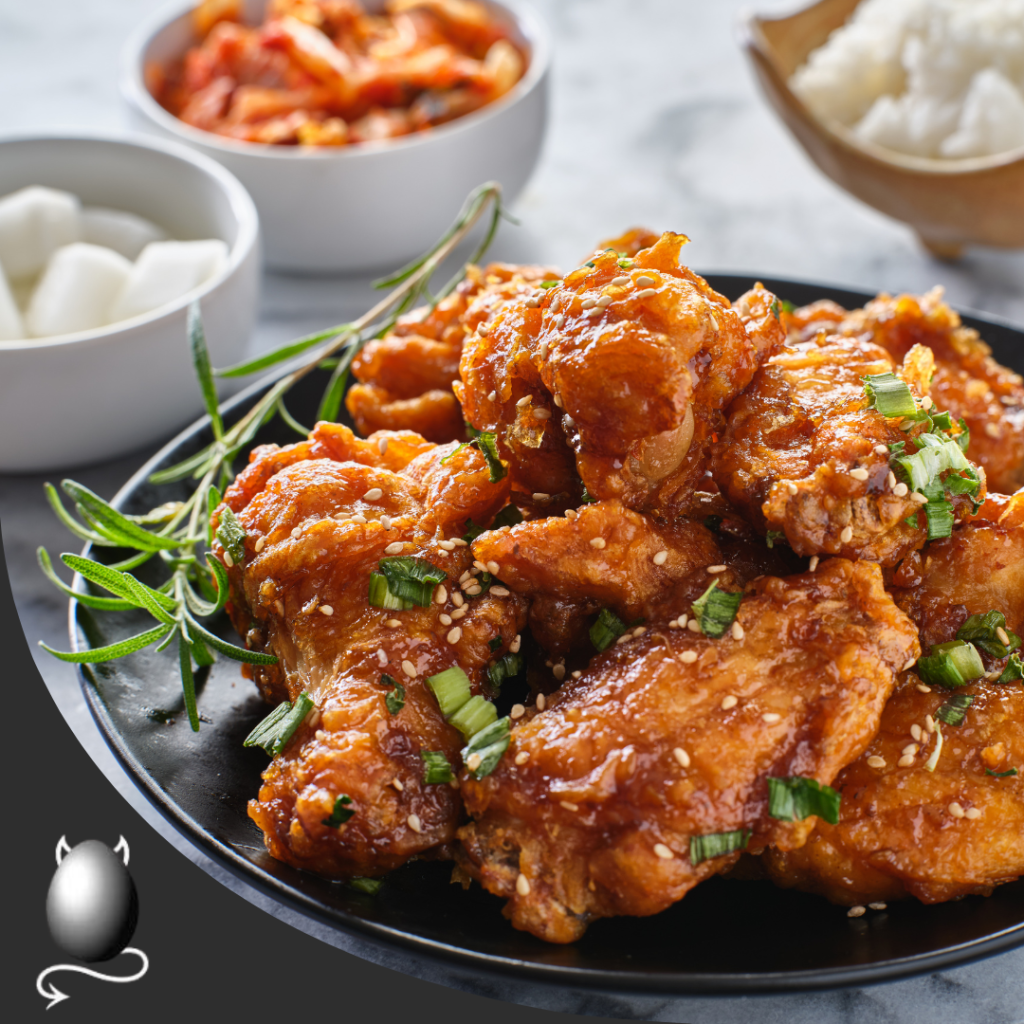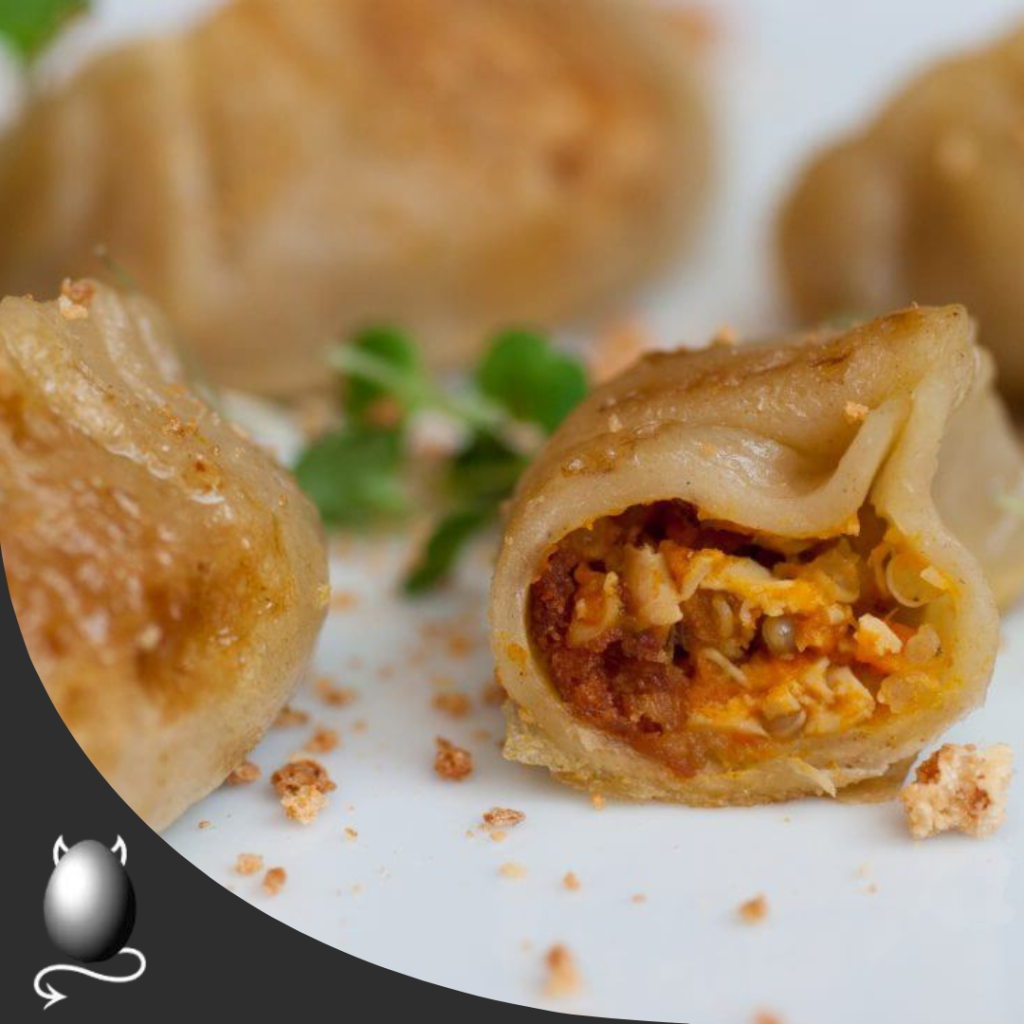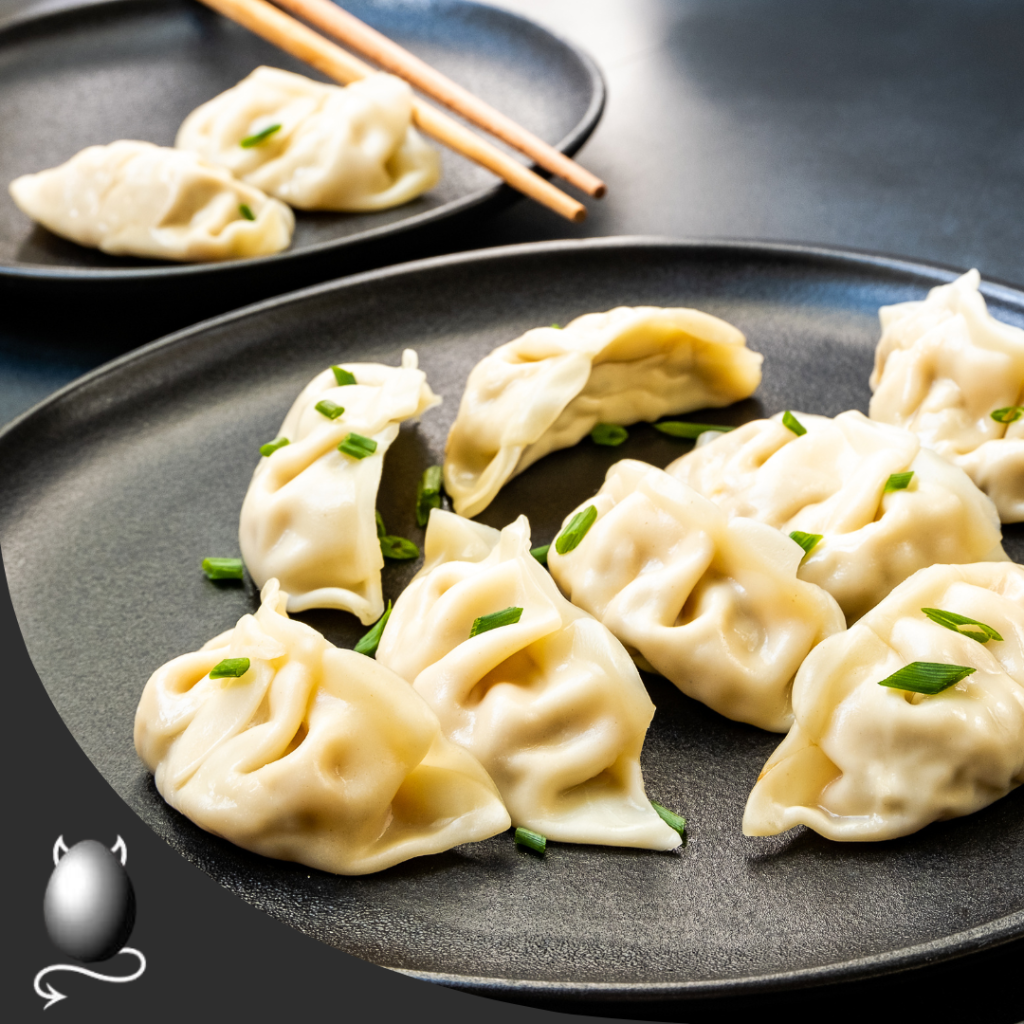These courses are an access anytime e-learning resource provided free of charge by The Devilled Egg Cookery School which anyone can join.
Learning to make a real kombu dashi will open the door to a whole range of dishes from Japanese and South East Asian cuisine.It is a kelp stock which is simple enough to make, and is also called ichiban dashi or ‘first stock’. It’s a fundamental technique in the Japanese culinary tradition, and a great place to start learning about the subject. For this session we will also show you how to make a broth with your dashi stock.
For the dashi stock:
900ml water
2 large strips of kombu
2 tablespoons Katsuobushi
Flavourings for the broth:
1 tablespoon of soya sauce
1 tablespoon of brown miso paste
1 tablespoon of creamed coconut
PRESS HERE to view now
This is a recipe for amazingly crunchy and easy tempura batter which you can use with a selection of vegetables, prawns and seafood.
120g plain flour
120g potato starch (corn flour can be used instead)
1 egg yolk
300ml cold sparkling water
1 tablespoon of additional flavourings (sesame seeds, seaweed, herbs, spices), optional
Selection of vegetables and/or prawns
PRESS HERE to view now
Fried chicken transcends cultural boundaries and can find an audience just about anywhere in the world. From the restaurants of the American deep south to wedding banquets in Guangzhou, China, its combination of crunch and succulence is enjoyed around the world in countless variations.
Chicken:
400g chicken wings
2 tablespoons rice vinegar
1 tsp fish sauce
1/2 tsp dried ginger
1/2 tsp salt
1/2 pepper
100g potato starch
1/2 teaspoon of salt
1/2 teaspoon of pepper
Sauce:
4 tablespoons of honey
3 tablespoons ketchup
3 tablespoons Korean chilli paste
1 tablespoon of sesame oil
1 clove of garlic, finely minced
1/4 teaspoon of fresh ginger, finely minced
2 taboesoons dark soy sauce
Finish with a squeeze of lime
PRESS HERE to view now
Gyoza are the Japanese version of a Jiaozi.
The ability to make neat, tasty gyoza is very useful. It’s one of those skills which is acquired quickly and adapted easily; the kind we love to teach.
This version features a deliciously warming autumnal filling.
Filling:
50g plain tofu, grated
50g cooked quinoa
1 large cloves garlic, pureed or finely chopped
1 centimetres ginger – fresh (about 1/2 tablespoon), peeled finely chopped
Zest of 1 lime
1 Amaretti biscuit, crumbled
100g cooked pumpkin flesh
1/2 teaspoon of salt
1 teaspoon of tikka masala powder
Combine the filling ingredients and season to taste
Wrappers:
120 g bread flour
120 g plain flour
1/2 tsp salt
120 ml freshly boiled water
1/2 teaspoon of tikka masala powder
PRESS HERE to view now
Jiaozi are the Chinese version of a gyoza.
Making Jiaozi is one of those skills which is acquired quickly and adapted easily; you can use an array of different fillings and enjoy with a light dipping sauce.
Filling:
100g package tofu, marinated
100g cooked quinoa
100g cabbage, shredded
4 spring onions, chopped
2 large cloves garlic, zested
2.5 centimetres ginger – fresh (about 1 tablespoon), zested
2 tablespoons sesame oil
1 tablespoons soy sauce
1/4 white teaspoon pepper
4 dried shiitake mushrooms
Zest of 1 lime
2 tsp black sesame seeds
Wrappers:
120 g bread flour
120 g plain flour
1/2 tsp salt
120 ml just-boiled water
1/2 teaspoon of turmeric powder
Dipping sauce:
120ml soya sauce
Juice of 1/2 lime
1/2 teaspoon of sugar
Chilli oil to taste
2 spring onions, sliced
PRESS HERE to view now


